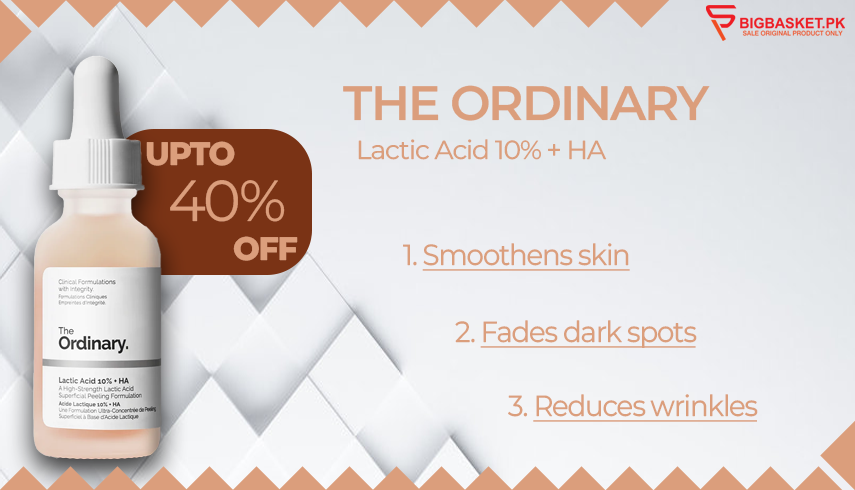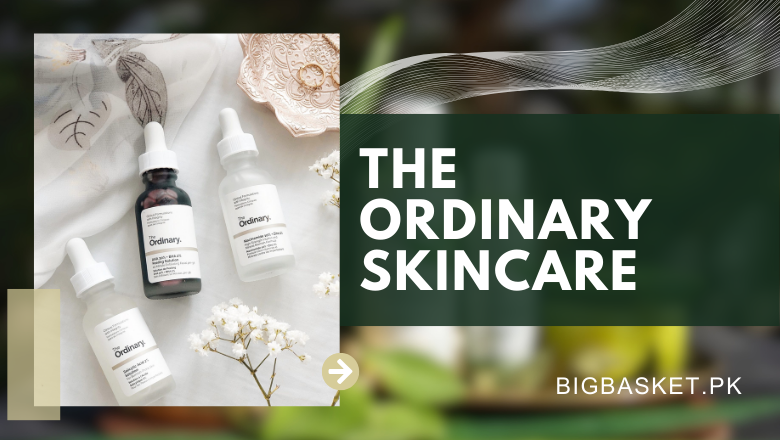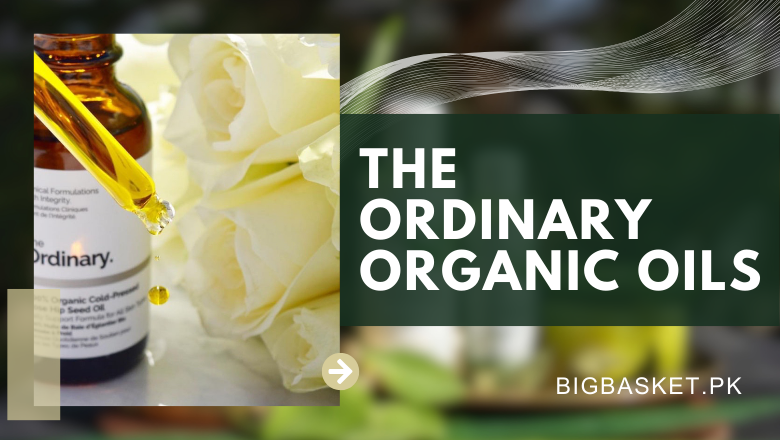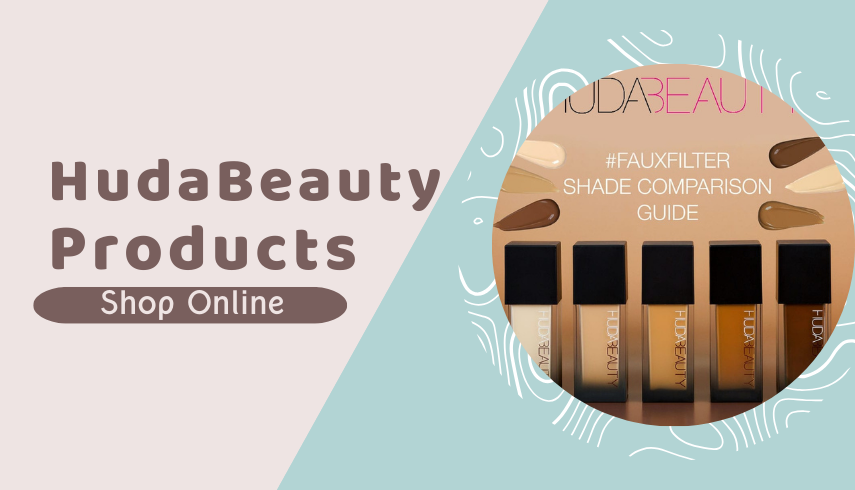If you’re on the hunt for an effective exfoliating serum that also hydrates your skin, The Ordinary Lactic Acid 10% + HA 2% might be your answer. This product combines gentle yet powerful lactic acid exfoliation with the hydrating properties of hyaluronic acid, making it a skincare favorite. In this article, we’ll explore everything you need to know about this serum, its benefits, application tips, and how to use it for maximum results.
Contents
- 1 What is The Ordinary Lactic Acid 10% + HA 2%?
- 1.1 Benefits of Using Lactic Acid for Skincare
- 1.2 How Lactic Acid 10% Exfoliates and Brightens Skin
- 1.3 The Role of HA (Hyaluronic Acid) in Hydration
- 1.4 Who Should Use The Ordinary Lactic Acid 10% + HA 2%?
- 1.5 How to Incorporate The Ordinary Lactic Acid 10% + HA 2% Into Your Skincare Routine
- 1.6 The Ordinary Lactic Acid 10% + HA 2% vs. Other Exfoliating Acids
- 1.7 Side Effects of Lactic Acid and How to Minimize Them
- 1.8 Can Lactic Acid Be Used for Acne-Prone Skin?
- 1.9 Tips for Applying TThe Ordinary Lactic Acid 10% + HA 2% Correctly
- 1.10 Best Time to Use The Ordinary Lactic Acid for Maximum Effect
- 1.11 Lactic Acid and Hyaluronic Acid: A Powerful Combination
- 1.12 The Ordinary Lactic Acid vs. Glycolic Acid: Which is Better?
- 1.13 Customer Reviews and Results Within 30 Days
- 1.14 Where to Buy The Ordinary Lactic Acid at the Best Price
- 1.15 The Ordinary Lactic Acid 10%: Is It Worth It?
- 1.16 Precautions While Using The Ordinary Lactic Acid
- 1.17 How to Store The Ordinary Lactic Acid for Long-Lasting Effectiveness
- 1.18 How to Combine Lactic Acid with Other Skincare Products
- 1.19 FAQs
- 1.19.1 1. What does Lactic Acid 10% + HA 2% do?
- 1.19.2 2. How often should you use The Ordinary Lactic Acid 10% + HA?
- 1.19.3 3. What not to mix with Lactic Acid?
- 1.19.4 4. Can I use 10% Lactic Acid every day?
- 1.19.5 5. What is Lactic Acid 10% + HA good for?
- 1.19.6 6. What does Lactic Acid 10% + HA do?
- 1.19.7 7. What does Lactic Acid 10% do for skin?
- 1.19.8 8. What does Lactic Acid 10% do?
- 1.19.9 9. How often should you use 10% Lactic Acid?
- 1.19.10 10. What not to mix with Lactic Acid serum?
- 1.19.11 11. What not to mix with Lactic Acid?
- 1.19.12 12. What not to mix with Lactic Acid skincare?
- 1.19.13 13. What not to mix with Glycolic and Lactic Acid?
- 1.19.14 14. What can’t you mix with Lactic Acid?
- 1.19.15 15. What can I not mix with Lactic Acid?
- 1.19.16 16. Can I use 10% Lactic Acid every day?
- 1.19.17 17. Can you use 10% Lactic Acid daily?
- 1.19.18 18. Can we use Lactic Acid and Retinol together?
- 1.19.19 19. How to use Lactic Acid for skin lightening?
- 1.19.20 20. How do I get rid of wrinkles and puffiness around my eyes?
What is The Ordinary Lactic Acid 10% + HA 2%?
The Ordinary Lactic Acid 10% + HA 2% is a lightweight, water-based serum designed to exfoliate the skin, improve its texture, and provide hydration. Lactic acid is an alpha-hydroxy acid (AHA) that works by dissolving the bonds between dead skin cells, promoting cell turnover for smoother, brighter skin.
The formula is enriched with 2% hyaluronic acid (HA), which helps retain moisture and counteract the potential dryness caused by exfoliation. This combination makes it ideal for those looking to refine their skin without irritation.
Benefits of Using Lactic Acid for Skincare
Lactic acid offers multiple benefits that make it a standout ingredient in skincare:
- Exfoliates Gently: It removes dead skin cells, revealing smoother and brighter skin underneath.
- Improves Skin Texture: Regular use helps refine uneven skin texture and tone.
- Hydrates the Skin: Unlike harsher acids, lactic acid also acts as a humectant, helping the skin retain moisture.
- Fights Signs of Aging: It minimizes the appearance of fine lines and wrinkles.
- Targets Pigmentation: It helps lighten dark spots, acne scars, and uneven patches.
How Lactic Acid 10% Exfoliates and Brightens Skin
Lactic acid works by gently dissolving the “glue” that holds dead skin cells together on the skin’s surface. This process accelerates cell turnover, resulting in brighter and healthier skin. The 10% concentration in this product is effective yet gentle, suitable even for those with sensitive skin when used correctly.
The Role of HA (Hyaluronic Acid) in Hydration
Hyaluronic acid is a best ingredient in skincare. It is known for its ability to hold up to thousand times its weight in the water. In this serum, the 2% HA helps prevent the skin from feeling dry or irritated after exfoliation. It provides long-lasting hydration, plumping the skin and leaving it soft and supple.
Who Should Use The Ordinary Lactic Acid 10% + HA 2%?
This product is perfect for individuals with the following concerns:
- Dull or Uneven Skin Tone: The exfoliating properties brighten dull skin.
- Rough Skin Texture: It smoothens rough patches and softens the skin.
- Fine Lines and Wrinkles: Regular use can reduce the appearance of aging signs.
- Pigmentation Issues: It helps fade acne scars and dark spots.
- Dry or Dehydrated Skin: Thanks to its hydrating formula, it’s suitable for dry skin types.
Note: This serum is not recommended for extremely sensitive, peeling, or compromised skin.
How to Incorporate The Ordinary Lactic Acid 10% + HA 2% Into Your Skincare Routine
Here’s how to use this serum effectively:
- Start Slowly: If you’re new to AHAs, begin with 2-3 applications per week to build your skin’s tolerance.
- Evening Use: Apply this serum at night after cleansing and before moisturizing.
- Small Amount: Use 2-3 drops and spread evenly across the face and neck.
- Moisturize: Follow up with a hydrating moisturizer to lock in hydration.
- Sunscreen is a Must: Since AHAs increase sun sensitivity, always wear SPF during the day.
The Ordinary Lactic Acid 10% + HA 2% vs. Other Exfoliating Acids
When it comes to exfoliation, lactic acid is often compared to other AHAs like glycolic acid. Here’s how it stacks up:
- Gentler than Glycolic Acid: Lactic acid molecules are larger, penetrating the skin more slowly and reducing the risk of irritation.
- Hydrating Properties: Unlike glycolic acid, lactic acid also hydrates the skin.
- Better for Beginners: Lactic acid is an ideal choice for those new to chemical exfoliation.
Side Effects of Lactic Acid and How to Minimize Them
While lactic acid is one of the gentlest AHAs, it can still cause side effects, especially if overused or applied on sensitive skin. Common issues include:
- Skin Irritation: Redness, itching, or tingling may occur.
- Dryness or Peeling: Some flakiness is normal as the skin renews itself.
How to Minimize Side Effects:
- Start with a lower concentration, such as The Ordinary Lactic Acid 5% + HA.
- Always do patch test before apply any product specially on your face.
- Avoid using other active ingredients like retinol or vitamin C on the same day.
Can Lactic Acid Be Used for Acne-Prone Skin?
Yes, this serum is beneficial for those dealing with acne scars or rough texture caused by acne. It promotes cell turnover, which can fade marks over time and improve the skin’s overall appearance. However, for active acne, it’s better to consult a dermatologist before use.
Tips for Applying TThe Ordinary Lactic Acid 10% + HA 2% Correctly
- Use it at night for best results.
- Do not mix with other exfoliating acids, retinoids, or strong active ingredients.
- Wait for the serum to absorb before applying a moisturizer.
Best Time to Use The Ordinary Lactic Acid for Maximum Effect
The best time to use this serum is during your evening skincare routine. Nighttime application allows the serum to work without interference from sunlight, which can irritate exfoliated skin.
Lactic Acid and Hyaluronic Acid: A Powerful Combination
The combination of lactic acid and hyaluronic acid in this formula ensures effective exfoliation without stripping the skin. While lactic acid removes dead skin cells, hyaluronic acid replenishes moisture, making this product ideal for maintaining hydration while refining skin texture.
The Ordinary Lactic Acid vs. Glycolic Acid: Which is Better?
- For Sensitive Skin: Lactic acid is gentler and more hydrating.
- For Deeper Exfoliation: Glycolic acid penetrates deeper and is more effective for stubborn dark spots.
- For Beginners: Lactic acid is a better starting point for new users.
Customer Reviews and Results Within 30 Days
Many users report visible improvements within the first month of using this serum:
- Brighter Skin: Most users notice a glow after 2-3 weeks.
- Improved Texture: Rough patches smooth out over time.
- Hydrated Skin: The HA component ensures the skin feels plump and hydrated.
Where to Buy The Ordinary Lactic Acid at the Best Price
You can purchase The Ordinary Lactic Acid 10% + HA 2% online through official retailers or e-commerce platforms like Bigbasket, and best option for those in Pakistan, look for authorized sellers offering the best price and quality products they can buy from Bigbasket.pk.
The Ordinary Lactic Acid 10%: Is It Worth It?
Absolutely! This serum offers high-quality exfoliation and hydration at an affordable price point, making it a must-have for anyone looking to elevate their skincare routine.
Precautions While Using The Ordinary Lactic Acid
- Avoid applying on broken or compromised skin.
- Do not use alongside other AHAs, BHAs, or retinoids.
- Always wear sunscreen during the day.
How to Store The Ordinary Lactic Acid for Long-Lasting Effectiveness
Keep the serum in a cool & dry place. Put this away from direct sunlight. Must Ensure the bottle is closed tightly specially when not in use.
How to Combine Lactic Acid with Other Skincare Products
- With Moisturizers: Follow up with a hydrating cream to seal in moisture.
- With Niacinamide: Use niacinamide in the morning and lactic acid at night.
- Avoid Mixing: Avoid combining with retinol, vitamin C, or other exfoliants.
FAQs
1. What does Lactic Acid 10% + HA 2% do?
The Ordinary Lactic Acid 10% + HA 2% gently exfoliates the skin to improve texture, brighten dullness, and reduce the appearance of fine lines and dark spots. The added hyaluronic acid (HA) provides hydration, keeping the skin plump and moisturized.
2. How often should you use The Ordinary Lactic Acid 10% + HA?
Start by using it 2-3 times a week in your evening skincare routine. Once your skin builds tolerance, you can gradually increase the frequency to every other night. Avoid overusing it to prevent irritation.
3. What not to mix with Lactic Acid?
Avoid combining lactic acid with:
- Retinol: May cause irritation.
- Vitamin C: Reduces effectiveness and can irritate.
- Other AHAs/BHAs (like glycolic or salicylic acid): Too harsh when used together.
- Benzoyl Peroxide: Can dry out the skin.
4. Can I use 10% Lactic Acid every day?
It’s not recommended for daily use, especially for beginners or those with sensitive skin. Start with 2-3 times a week, and increase usage only if your skin tolerates it well. Overuse can lead to irritation and over-exfoliation.
5. What is Lactic Acid 10% + HA good for?
This product is great for:
- Smoothing uneven skin texture.
- Brightening dull, tired skin.
- Reducing fine lines and wrinkles.
- Fading acne scars and pigmentation.
- Hydrating the skin (thanks to HA).
6. What does Lactic Acid 10% + HA do?
It exfoliates dead skin cells to improve texture and tone while providing hydration to maintain a healthy moisture barrier.
7. What does Lactic Acid 10% do for skin?
Lactic Acid 10% helps remove dead skin cells, unclogs pores, fades pigmentation, and softens fine lines, leaving your skin radiant, smooth, and hydrated.
8. What does Lactic Acid 10% do?
It acts as a gentle exfoliant that resurfaces the skin while also hydrating it, making it ideal for improving skin tone, texture, and overall appearance.
9. How often should you use 10% Lactic Acid?
Use it 2-3 times per week at night, and increase frequency gradually if your skin tolerates it well.
10. What not to mix with Lactic Acid serum?
Avoid mixing it with:
- Retinoids
- Vitamin C
- Benzoyl Peroxide
- Other exfoliants (AHAs, BHAs)
11. What not to mix with Lactic Acid?
Don’t mix lactic acid with:
- Retinol
- Vitamin C
- Harsh scrubs
- Strong active ingredients
12. What not to mix with Lactic Acid skincare?
Do not mix lactic acid with:
- Retinoids
- Other chemical exfoliants
- Vitamin C serums
- Strong acne treatments
13. What not to mix with Glycolic and Lactic Acid?
Avoid using them together or with other active ingredients like retinol, vitamin C, or benzoyl peroxide.
14. What can’t you mix with Lactic Acid?
You cannot mix it with strong active ingredients, especially retinol or other acids.
15. What can I not mix with Lactic Acid?
Avoid to pairing it with Vitamin C, retinol and Peeling Solution (AHA/BHA).
16. Can I use 10% Lactic Acid every day?
No, it’s better to use it 2-3 times a week initially. Daily use can lead to irritation and over-exfoliation.
17. Can you use 10% Lactic Acid daily?
Using it daily can cause redness and irritation. Stick to 2-3 times per week at first.
18. Can we use Lactic Acid and Retinol together?
No, it’s not advisable to use lactic acid and retinol at the same time as they can irritate the skin. Yes you can use one Lactic Acid in the morning and Retinol at night, or alternate days.
19. How to use Lactic Acid for skin lightening?
- Apply it at night after cleansing.
- Use a thin layer on areas with uneven tone or pigmentation.
- Follow up with a moisturizer and SPF the next morning.
Regular use will brighten the skin over time by exfoliating and fading dark spots.
20. How do I get rid of wrinkles and puffiness around my eyes?
For wrinkles and puffiness:
- Use a hydrating eye cream with caffeine or peptides.
- Apply cold compresses to reduce puffiness.
- Consider products with retinol or niacinamide to improve fine lines.
- Ensure you’re hydrated and get enough sleep.
Avoid using lactic acid around the eye area as it may cause irritation.







